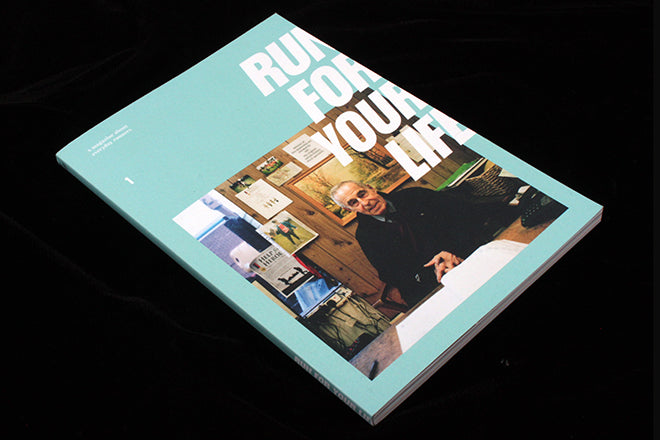
Run For Your Life #1
Anyone else find fitness magazines nauseating?
This is (of course) coming from somebody who is terrified of exercise. The rough intent is there: I have a whole box of lycra stashed at the back of some distant drawer and, in the immediate aftermath of eating one Chocolate Orange too many, “getting fit” is high on my list of New Year’s Resolutions. Unsurprisingly however the thought of climbing out of bed to pant my way through a cold January morning stops me in my tracks. Running magazines do not help. An attractive, grinning and slightly (definitely) smug runner seems to grace every cover. With not a single red face in sight, these magazines bear little relation to me.
You’d be pressed to accuse Run For Your Life of this. Described as “a magazine about everyday runners,” on the cover of issue one is secondhand car salesman Ken. At 70-something, he is photographed at his office in a gingham shirt concealed with a modest anorak. He is hardly the poster boy for marathon runners.
On further investigation however, Ken has run well over 100 marathons, not to mention a 24-hour race. His reason for starting running was out of necessity rather than fitness. “In 1979, I was married when I met this young lady called Pam, who’s the lady I live with now – we’ve been together 35 years,” he tells Run For Your Life. “We didn’t have mobile phones in those days and Pam lived in a village 20 miles away from me. I’d lost my driving license and couldn’t jump in the car and run to a phone box, so the only way I could get out was running. I bought some jogging bottoms and found some old trainers, and would tell my now ex-wife that I was going out on the pretence of running.”
Ken is one of 11 runners featured in the first issue of Run For Your Life – the Contents page (above) lists them all. There’s Jenny Baker, who ran to all of her chemotherapy appointments when she was diagnosed with cancer (below), and Jon Holley, who took up running to help cope with the grief of losing his son. There’s also more ordinary stories: Londoner Sarah Roweberry runs to simply clear her head, while chef Steve Leighfield took up the sport in an effort to battle depression.
Run For Your Life excels at finding the ordinary in the extraordinary: it is telling that I (remember the stash of lycra that never sees the light of day) can relate to each and every one of the magazine’s interviewees, despite the fact that most have run several marathons. Once more, there are no photographs of running in the magazine: the closest you get are pictures of some old trainers. Instead, all the subjects are photographed in everyday settings: a restaurant kitchen, a car forecourt, a street corner. These images benefit from a bold use of colour and a strong but playful typographic identity.
In doing all of the above, Run For Your Life presents a side of running that exercise-phobes and marathon runners alike can relate to: normal people that started running as an accompaniment to life, rather than ultra-fit super-humans that strike fear in the rest of us.
After reading Run For Your Life, I almost fancy myself as a runner.
Editor: Luke Leighfield
Art director: MattWithers







